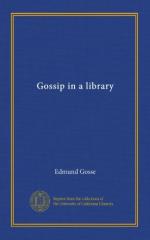The herbalist and his editor write from personal experience, and this gives them a great advantage in dealing with superstitions. If there was anything which people were certain about in the early part of the seventeenth century, it was that the mandrake only grew under a gallows, where the dead body of a man had fallen to pieces, and that when it was dug up it gave a great shriek, which was fatal to the nearest living thing. Gerard contemptuously rejects all these and other tales as “old wives’ dreams.” He and his servants have often digged up mandrakes, and are not only still alive, but listened in vain for the dreadful scream. It might be supposed that such a statement, from so eminent an authority, would settle the point, but we find Sir Thomas Browne, in the next generation, battling these identical popular errors in the pages of his Pseudodoxia Epidemica. In the like manner, Gerard’s botanical evidence seems to have been of no use in persuading the public that mistletoe was not generated out of birdlime dropped by thrushes into the boughs of trees, or that its berries were not desperately poisonous. To observe and state the truth is not enough. The ears of those to whom it is proclaimed must be ready to accept it.
Our good herbalist, however, cannot get through his sixteen hundred accurate and solemn pages without one slip. After accompanying him dutifully so far, we double up with uncontrollable laughter on p. 1587, for here begins the chapter which treats “of the Goose Tree, Barnacle Tree, or the Tree bearing Geese.” But even here the habit of genuine observation clings to him. The picture represents a group of stalked barnacles—those shrimps fixed by their antennae, which modern science, I believe, calls Lepas anatifera; by the side of these stands a little goose, and the suggestion of course is that the latter has slipped out of the former, although the draughtsman has been far too conscientious to represent the occurrence. Yet the letterpress is confident that in the north parts of Scotland there are trees on which grow white shells, which ripen, and then, opening, drop little living geese into the waves below. Gerard himself avers that from Guernsey and Jersey he brought home with him to London shells, like limpets, containing little feathery objects, “which, no doubt, were the fowls called Barnacles.” It is almost needless to say that these objects really were the plumose and flexible cirri which the barnacles throw out to catch their food with, and which lie, like a tiny feather-brush, just within the valves of the shell, when the creature is dead. Gerard was plainly unable to refuse credence to the mass of evidence which presented itself to him on this subject, yet he closes with a hint that this seems rather a “fabulous breed” of geese.
With the Barnacle Goose Tree the Herbal proper closes, in these quaint words:
“And thus having, through God’s assistance, discoursed somewhat at large of grasses, herbs, shrubs, trees and mosses, and certain excrescences of the earth, with other things moe, incident to the history thereof, we conclude, and end our present volume with this wonder of England. For the which God’s name be ever honoured and praised.”




